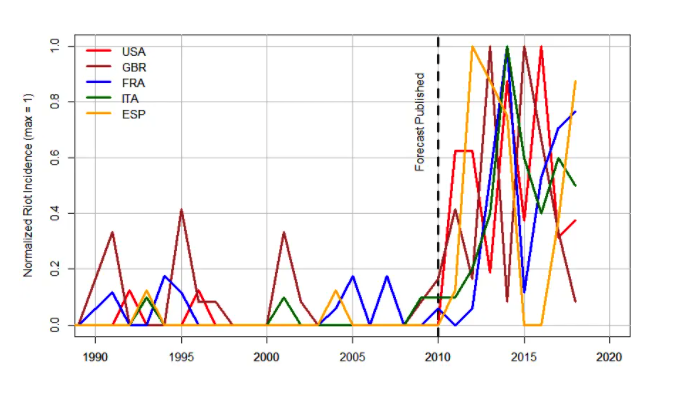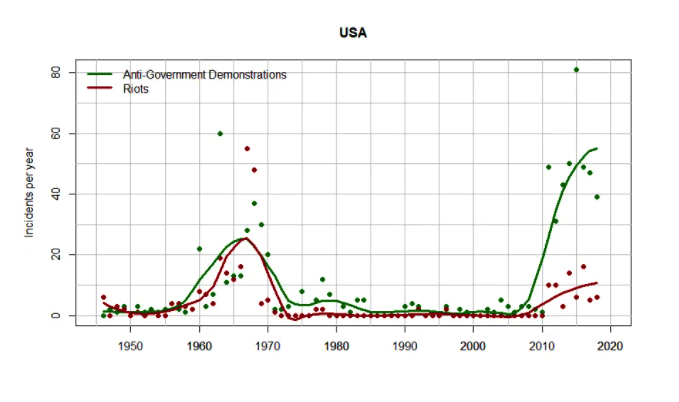The year 2020 has brought with it an unrelenting onslaught of political, economic and societal chaos that has erupted across the globe. However, one scientist predicted this nightmare of a year a full decade ago.
University of Connecticut researcher Peter Turchin published an article in the journal "Nature" in 2010, in which he predicted the social and economic turmoil that would peak in or around 2020.

Turchin, a Russian-American scientist who studies math, ecology, evolutionary biology and anthropology at UConn, cited a rise in public debt, declining real wages, overproduction of graduates and a growing gap between rich and poor as the main reasons behind the instability spike.
Political Instability
The scientist identified a 50-year cycle when the political instability experiences a spike – 1870, 1920, 1970 etc. In the paper, Turchin points out that another spike "could be due around 2020." In the paper titled, ''Political instability may be a contributor in the coming decade," he notes that "complex human societies are affected by recurrent — and predictable — waves of political instability."
Economic Growth and Turmoil
While political instability occurred every 50 years, economic turmoil peaked over a 40 to 60-year cycle in what is known as a Koreatiev wave, which suggested severe recessions were in the offing.
"Records show that societies can avert disaster," Turchin wrote. "We need to find ways to ameliorate the negative effects of globalization on people's well-being. Economic inequality, accompanied by burgeoning public debt, can be addressed by making tax rates more progressive. And we should not expand our system of higher education beyond the ability of the economy to absorb university graduates."
Political Stress Index
Turchin based his forecast on a quantitative model that collected major drivers that lead to instability including economic impoverishment, intra-elite competition and state capacity.
He then created a Political Stress Index, and revisited the 2010 prediction in a blog post earlier this month to compare the current events, protest and riots, and found nearly all of the trends experienced a spike after 2010. In the first graph, Turchin illustrates the incidence of riots across six major Western countries -- USA, Great Britain, France, Italy and Spain.

Data in the second graph shows that the US is experiencing a similar wave of instability that peaked in the late 1960s.

"Our conclusion is that, unfortunately, my 2010 forecast is correct. Unfortunately, because I would have greatly preferred it to become a 'self-defeating prophecy', but that clearly has not happened," Turchin wrote.
"What does it mean for the current wave of protests and riots? The nature of such dynamical processes is such that it can subside tomorrow, or escalate; either outcome is possible. A spark landing even in abundant fuel can either go out, or grow to a conflagration."








